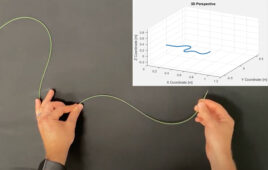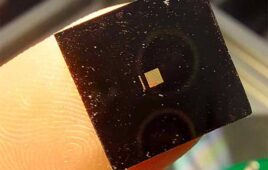
Pseudomonas bacteria forming a biofilm. [Image from Vernita Gordon/U. of Texas at Austin]
Biofilms are a group of microorganisms that stick to a surface. Over time, the cells in the biofilm can grow and cause chronic infections and can even become resistant to antibiotics.
The researchers discovered that for the bacteria Pseudomonas aeruginosa to form a biofilm, they have to sense that they are on a surface. Pseudomonas, the bacteria that are present with biofilm infections, are able to detect mechanical shear. Mechanical shear is a stretching that occurs when bacterium is attached to a surface with liquid that is moving or pulling itself along surrounding the surface. Once it detects that it’s on a surface, it starts to form biofilm.
Biofilm infections are more likely to affect people who have cystic fibrosis, diabetes and chronic obstructive pulmonary disease. Approximately 648,000 patients had some type of healthcare-related infection in 2011, resulting in a total of 721,800 infections, according to a 2014 journal article in The New England Journal of Medicine.
“It’s important to prevent biofilms before they start,” said Vernita Gordon, an assistant professor of physics and senior author on the study, in a press release. “It’s much easier to wipe out free-floating bacteria than a biofilm.”
Now the researchers are left with trying to figure out how to stop Pseudomonas aeruginosa from detecting that they are attached to a surface to stop the formation of biofilms. Current methods prevent biofilms by killing the bacteria or preventing it from attaching to the surface altogether. However, those methods only work against certain types of bacteria in specific circumstances.
“What we suggest is, if they are responding to a mechanical cue, then you could make a third class of biofilm-preventing surface,” Gordon said. “You could modulate the mechanics of the surface so they never get the signal that they are attached, and they never start making a biofilm.”
The researchers suggest that an engineered combination of all 3 approaches could maximize the effectiveness of preventing biofilms.
The University of Texas at Austin and ExxonMobil funded the research, which was published in the Proceedings of the National Academy of Sciences.
[Want to stay more on top of MDO content? Subscribe to our weekly e-newsletter.]






